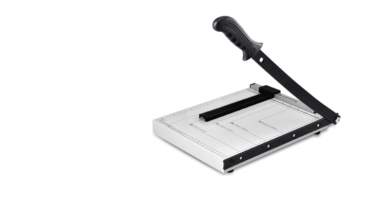Sublimation Printing Advantage & Disadvantage
If you are looking for sublimation printing services or business opportunities, to know sublimation printing’s advantages & disadvantages you must read the whole article. As I have described in our step-by-step sublimation printing guide in depth.
Sublimation printing technology is based on the ink transfer from one solid substrate to another solid substrate without converting into a liquid state, this happens by applying heat & press on a special type of dye ink known as sublimation.
There are two types of sublimation printing 1. Digital Thermal Printing & Heat Transfer Printing One Media to Another Media)
Digital Thermal Printing (Ribbon Cartridge): Digital Thermal Printing is based on ribbon ink used for SMART ID CARD Printing. It is a type of compact sublimation machine designed for specific types of product printing as well as a Driving Licence, Aadhaar Card, Pan Card, Debit Card & Credit Card, etc. It is an instant printing process.
Using Sublimation Paper & Ink: This type of sublimation printing can be done on various types of objects like wood, metals, specific types of glass, plastics, papers, etc. Using sublimation paper printing product list is endless.
There are a lot of reasons people prefer sublimation printing on top of customized design printing services. For sublimation printing business required the best sublimation printer, heat-press machine, and special types of sublimation ink, that worked on piezoelectric technology.
Sublimation ink transferring to the substrate involves the heat press machine. Here, the heat activates the ink molecule to move onto the substrate pore and pressure cools down to fix it.
13 Benefits of Sublimation Printing
- Sublimation printing facilitates high-quality digital image printing on the substrate.
- It is applicable to a huge range of hard & soft materials (wood, fabrics, glass, ceramic, metal, and non-metals) that can be sublimated.
- Easy customization, no required additional setup cost as well as screen printing.
- Vibrant and permanent print color.
- The sublimation printing business is a low-investment business setup. You can start from your home.
- Eco-friendly process for humans and nature.
- Fast & easy process, not requiring more skills.
- Sublimation printing ink does not crack, peel off & fade prolong.
- The small image & text can be printed in high detail.
- No chance of printing registration mark out because all colors get printed at a time whereas in other printing methods one color can print one time.
- Low manpower cost printing business even you can do alone.
- No fear of print design damage even prolonged washing.
A lot of sublimation blanks (photo mug, t-shirt, tumbler, pillow cover, cap, lanyard, etc.)
Disadvantage
- The price per unit cost is a little higher compared to some other printing methods like screen printing and offset printing.
- There is a limitation of printing substrate it can apply polyester or polyester mix materials only.
Sublimation Printing v/s Screen Printing Advantage
Both the printing technology are low-investment businesses but both printings are the best from a different perspective. If you are confused about which one is the best it depends on your local market demands. I am here decoding each and every step that will help to choose the best for you.
| Sr. | Sublimation Printing | Screen Printing |
| 1. | Sublimation Printing is best known for customized product printing. | Screen Printing is an ideal process for making multiple duplicate copies with limited color printing. |
| 2. | Do not require a basic set-up cost for each design print. | The basic setup cost is fixed for each design & color separately. The cost depends on each design size & color. |
| 3. | All colors of designs are printed at a time. | At one time only single-color designs can be printed. |
| 4. | Required a min. labor to run a business. | Labour extensive printing business. |
| 5. | Required a lower time frame to produce the print. | It consumes a huge time. |
| 6. | Sublimation ink became a permanent part of products after printing. | The design looks like a thin layer of ink. |
| 7. | Impossible to remove the design once sublimation is printed. | Can be removed with a diluter or reducer. |
| 8. | Eco-friendly to humans and nature. | Hazardous & harmful, create water pollution. |
| 9. | Price per unit cost goes high. | Very low cost compare to sublimation printing. |
| 10. | Printing ink durability product life long. | Long but less than sublimation print. |
| 11. | There is a limitation of printing substrate. | Unlimited list of printing substrates. |
| 12. | Best recommended for vibrant color and exclusive quality print. | Go for screen printing for the cheapest printing materials. |
| 13 | It is a digital image printing process. | Traditional printing process. |
| 14. | High details content printing. | Fewer details content printing. |
| 15. | Awesome quality printing. | Compromising printing quality. |
| 16. | Does not affect the printing cost of the number of colors. | Higher color printing cost goes higher. |
| 17. | More color does not affect the final print product quality. | Higher color produces poor quality compare to the low-count color design. |
| 18. | No wastage | 2-3% min. wastage confirmed. |
| 19. | Do not require to be more skills. | Producing the best quality needs gaining deep experience. |
What are 50/50 Polyester Blend sublimation blanks?
In terms of sublimation printing, 50/50 polyester blend materials denote that the printing quality about color vibrancy declines up to 50% compared to the products made of 100% polyester materials.



